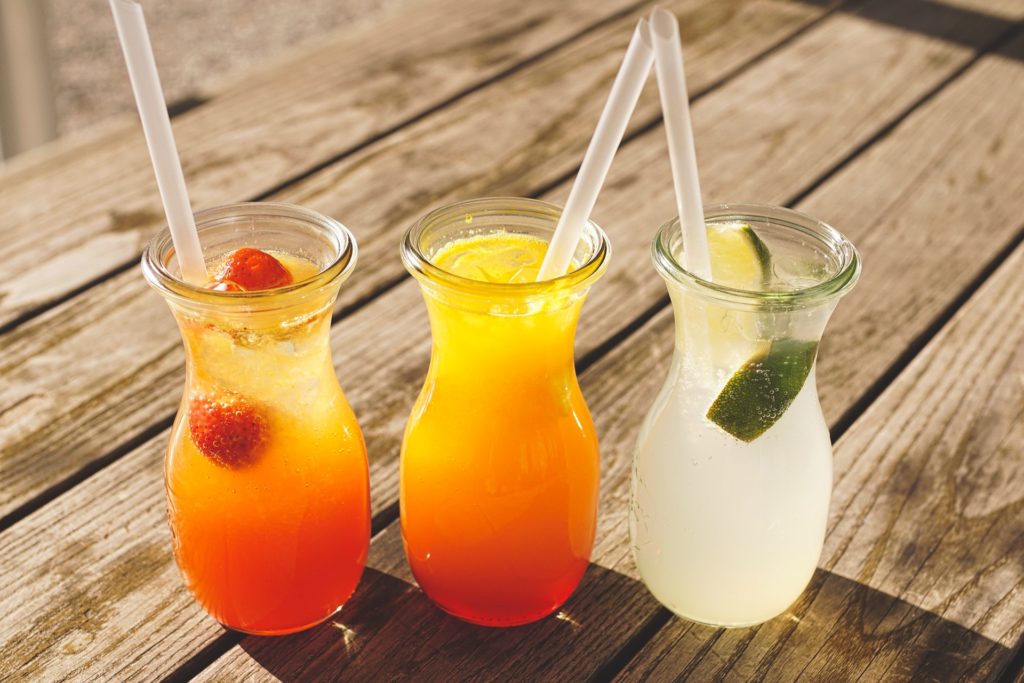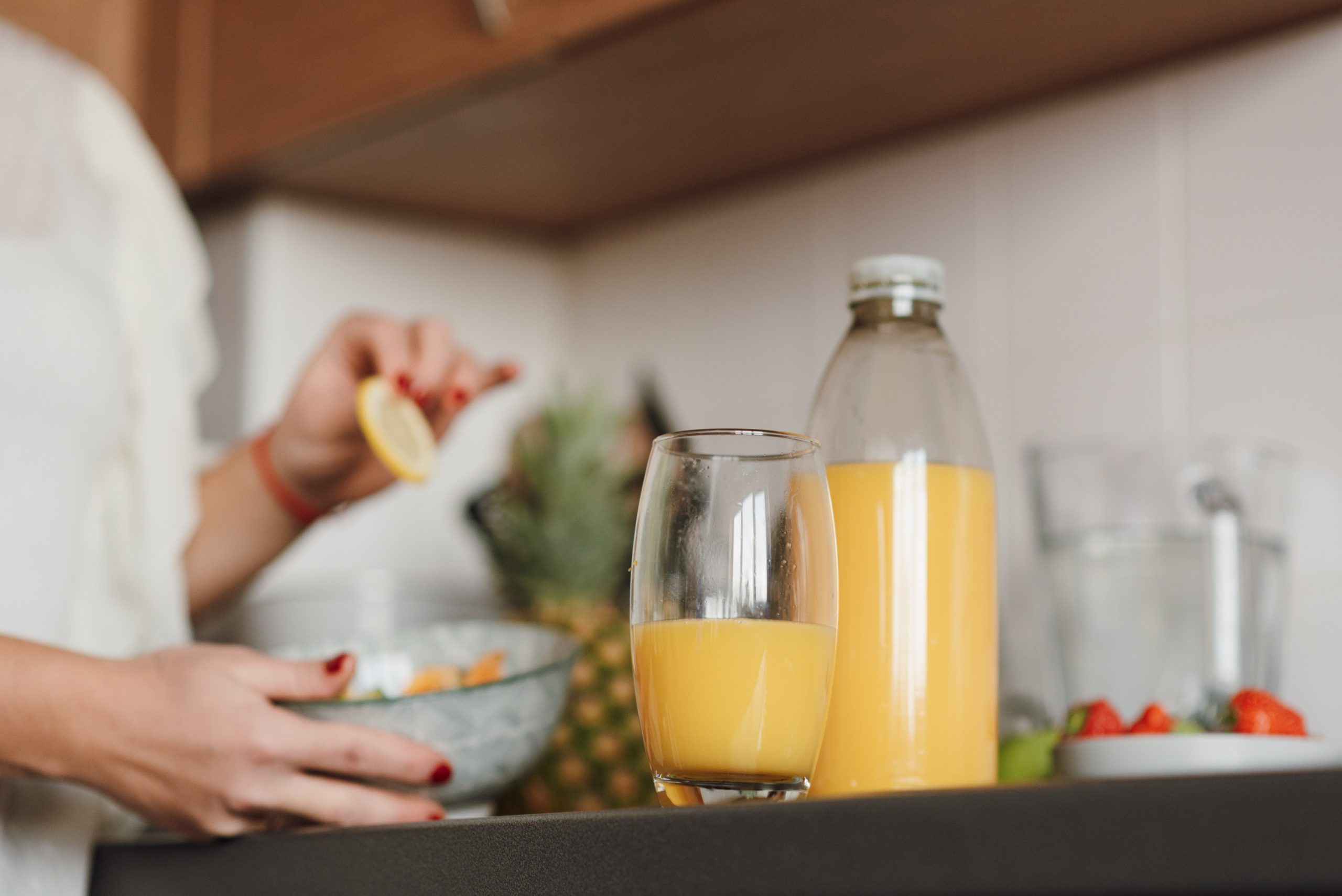Unhealthy fruit juices

Fruit juices hit the lunchbox scene with a bang as a healthy replacement for fizzy drinks. Children’s lunch boxes suddenly began to be packed with juices of all types of weird and wonderful flavours. Juice is amazing. It is tasty, kids love it and each carton is full of nutrients and vitamins. If only this was true, but healthy eating is never that simple.
Juice the beginning
The juice drink market has seen a myriad of changes and transformations since juices first came into fruition. Juices used to be sold in cans and were given to soldiers during the war to keep up their vitamin C levels. Fruit juices were soon to creep into everyone’s households and become a staple in people’s diets. It wasn’t however, until recently, that the fruit juice market really found its footing. It all started when fizzy drinks were classed as junk food and people became more aware of their sugar content. The very first style of juice drink that I remember as a child were the Um Bongos and Ribenas of the world. These juices were terrible but marketed as a fun, healthy alternative. Basically anything with fruit was deemed a health drink and no one really realised just what they were consuming. People weren’t as wise twenty years ago and we didn’t have the internet to share ideas. It was a time when the wool could easily be pulled over our eyes. These drinks were full of additives and didn’t really contain any sort of health benefit whatsoever. Ironically as people realised what was happening and what constitutes healthy, the juice business really took off. Suddenly a wide range of 100% juice drinks hit the shelves and this billion dollar industry just grew and grew and still continues growing today. It is amazing that for nearly a century the juice market remained untouched, but over the last two decades we have seen clear changes in the way these companies market their products.
Are you still concentrating?

The second change that occurred in the juice drink market was the idea of 100% fruit juices. This is still a lot of people’s idea of healthy and to this day many people still do not understand what the slogan “100% from concentrate” means. It costs a lot of money to ship fresh juice and real fresh juice will begin to turn bad straight after the juicing process. Concentrate is realised by taking the fresh juice, boiling it up to extremely high temperatures to leave the sugary sludge of the juice behind. This sludge is then deoxygenated so that the fruit does not turn bad during shipping. By removing the water for shipping and then adding it back on arrival the company saves 95% of the shipping cost. The problem is however, that when fruit or vegetables are heated to this high temperature the vitamins and minerals are killed off, leaving you with a juice sapped of its goodness and pact with sugar. This has been happening since the early 1900s but to make matters worse, in the 1960s comapanies then found a way to add preservatives and flavourings to make that ‘sludge water’ taste good once again. They were called favour packs; and yes they are packs of chemicals and artificial sweeteners, E numbers and flavourings.
Oh sugar!
We are once again back to the sugar debate! Everything bad leads back to sugar. Fruit juices range in amounts of sugar depending on the fruit being used. This is where the companies made their third transformation. A few years ago dentists started speaking up telling everyone to avoid fruit juices and the “5 a day” slogan changed into “5 a day, but only 1 piece of fruit” (not quite as catchy). Fruit juice companies soon cottoned onto this trend and suddenly a whole new range of fruit juices hit the shopping isles. Apple juice turned into gojiberry juice as they tried to sell the “superfood” angle; orange juice turned to carrot juice and other products such as broccoli and aloe vera started popping up. Tipco even released its 32 vegetable juice, somehow trying to tell us that 0.03% of a vegetable is even worth a mention. If you look at any of these juices, yes they contain what they say, but often mixed in with 2/3 fruit juice, meaning they are no healthier than their apple juice counterparts, and don’t forget that they are still “from 100% concentrate”.
Not so innocent
The final and most recent marketing transformation has been the introduction of freshly made juices.Some juice companies continue selling juices from concentrate, purely because most people are unaware just how bad these drinks are, but other companies have begun to make fresh juice, real juice, pure juice, such as the brands “Innocent” or “Me juice” for our Thai readers. These companies were aiming at those who were seeking an alternative to the carton packed juices. I myself have dabbled with making juices and it is part of our topic in our Kindergarten class, but it is essential to make children (and adults) aware of what they are putting into their bodies. Yes, pure juicing is much better than juice from concentrate and these juices in proportion are very good for you, brimming with insoluable fibre, vitamins and minerals, but choose carefully what you juice. One apple is 10g of sugar alone. If you want a healthy juice, try using carrots or beetroot as your sweeteners and keep the fruit content to a minimum. It really doesn’t take much time to work out just how much sugar is in your juice, so do the maths. Alternatively, pick up a piece of fruit and just take a bite.
It is ironic that for years the juice industry barely changed and it wasn’t until we became more aware and health conscious that the juice companies really got going. The juice business is growing year on year and doesn’t seem to be slowing down. As we become aware of one marketing ploy, another one pops up. We are almost creating opportunities for these businesses. At least for now, we are going in the right direction. One day these companies will have no more slogans to hide behind.
